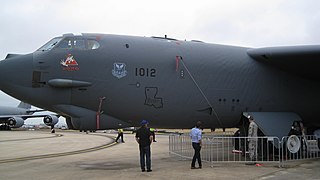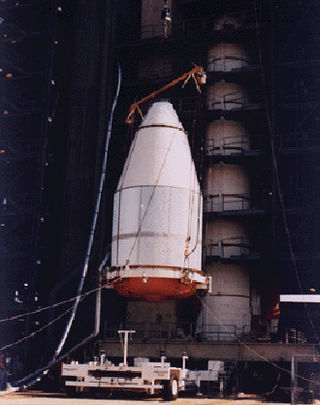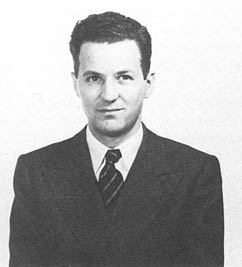
Aerodynamics is the study of the motion of air, particularly when affected by a solid object, such as an airplane wing. It involves topics covered in the field of fluid dynamics and its subfield of gas dynamics, and is an important domain of study in aeronautics. The term aerodynamics is often used synonymously with gas dynamics, the difference being that "gas dynamics" applies to the study of the motion of all gases, and is not limited to air. The formal study of aerodynamics began in the modern sense in the eighteenth century, although observations of fundamental concepts such as aerodynamic drag were recorded much earlier. Most of the early efforts in aerodynamics were directed toward achieving heavier-than-air flight, which was first demonstrated by Otto Lilienthal in 1891. Since then, the use of aerodynamics through mathematical analysis, empirical approximations, wind tunnel experimentation, and computer simulations has formed a rational basis for the development of heavier-than-air flight and a number of other technologies. Recent work in aerodynamics has focused on issues related to compressible flow, turbulence, and boundary layers and has become increasingly computational in nature.

Atmospheric entry is the movement of an object from outer space into and through the gases of an atmosphere of a planet, dwarf planet, or natural satellite. There are two main types of atmospheric entry: uncontrolled entry, such as the entry of astronomical objects, space debris, or bolides; and controlled entry of a spacecraft capable of being navigated or following a predetermined course. Technologies and procedures allowing the controlled atmospheric entry, descent, and landing of spacecraft are collectively termed as EDL.

In aerodynamics, a hypersonic speed is one that exceeds five times the speed of sound, often stated as starting at speeds of Mach 5 and above.

A cantilever is a rigid structural element that extends horizontally and is unsupported at one end. Typically it extends from a flat vertical surface such as a wall, to which it must be firmly attached. Like other structural elements, a cantilever can be formed as a beam, plate, truss, or slab.

In thermodynamics and fluid mechanics, the compressibility is a measure of the instantaneous relative volume change of a fluid or solid as a response to a pressure change. In its simple form, the compressibility may be expressed as

A waverider is a hypersonic aircraft design that improves its supersonic lift-to-drag ratio by using the shock waves being generated by its own flight as a lifting surface, a phenomenon known as compression lift.
In engineering, a heat shield is a component designed to protect an object or a human operator from being burnt or overheated by dissipating, reflecting, and/or absorbing heat. The term is most often used in reference to exhaust heat management and to systems for dissipating frictional heat. Heat shields are used most commonly in the automotive and aerospace industries.

The mechanical structure of an aircraft is known as the airframe. This structure is typically considered to include the fuselage, undercarriage, empennage and wings, and excludes the propulsion system.

In structural engineering, buckling is the sudden change in shape (deformation) of a structural component under load, such as the bowing of a column under compression or the wrinkling of a plate under shear. If a structure is subjected to a gradually increasing load, when the load reaches a critical level, a member may suddenly change shape and the structure and component is said to have buckled. Euler's critical load and Johnson's parabolic formula are used to determine the buckling stress of a column.
Thermal shock is a phenomenon characterized by a rapid change in temperature that results in a transient mechanical load on an object. The load is caused by the differential expansion of different parts of the object due to the temperature change. This differential expansion can be understood in terms of strain, rather than stress. When the strain exceeds the tensile strength of the material, it can cause cracks to form, and eventually lead to structural failure.

A nose cone is the conically shaped forwardmost section of a rocket, guided missile or aircraft, designed to modulate oncoming airflow behaviors and minimize aerodynamic drag. Nose cones are also designed for submerged watercraft such as submarines, submersibles and torpedoes, and in high-speed land vehicles such as rocket cars and velomobiles.

A drag-reducing aerospike is a device used to reduce the forebody pressure aerodynamic drag of blunt bodies at supersonic speeds. The aerospike creates a detached shock ahead of the body. Between the shock and the forebody a zone of recirculating flow occurs which acts like a more streamlined forebody profile, reducing the drag.

The Space Shuttle thermal protection system (TPS) is the barrier that protected the Space Shuttle Orbiter during the extreme 1,650 °C (3,000 °F) heat of atmospheric reentry. A secondary goal was to protect from the heat and cold of space while in orbit.

A supersonic aircraft is an aircraft capable of supersonic flight, that is, flying faster than the speed of sound. Supersonic aircraft were developed in the second half of the twentieth century. Supersonic aircraft have been used for research and military purposes, but only two supersonic aircraft, the Tupolev Tu-144 and the Concorde, ever entered service for civil use as airliners. Fighter jets are the most common example of supersonic aircraft.

An aeroshell is a rigid heat-shielded shell that helps decelerate and protects a spacecraft vehicle from pressure, heat, and possible debris created by drag during atmospheric entry. Its main components consist of a heat shield and a back shell. The heat shield absorbs heat caused by air compression in front of the spacecraft during its atmospheric entry. The back shell carries the load being delivered, along with important components such as a parachute, rocket engines, and monitoring electronics like an inertial measurement unit that monitors the orientation of the shell during parachute-slowed descent.

Antonio Ferri was an Italian scientist, prominent in the field of aerodynamics, with a specialization in hypersonic and supersonic flight.
Carbon fiber-reinforced polymers, carbon-fibre-reinforced polymers, carbon-fiber-reinforced plastics, carbon-fiber reinforced-thermoplastic, also known as carbon fiber, carbon composite, or just carbon, are extremely strong and light fiber-reinforced plastics that contain carbon fibers. CFRPs can be expensive to produce, but are commonly used wherever high strength-to-weight ratio and stiffness (rigidity) are required, such as aerospace, superstructures of ships, automotive, civil engineering, sports equipment, and an increasing number of consumer and technical applications.

Non-ballistic atmospheric entry is a class of atmospheric entry trajectories that follow a non-ballistic trajectory by employing aerodynamic lift in the high upper atmosphere. It includes trajectories such as skip and glide.
The Boom XB-1 "Baby Boom" is a one-third-scale trijet supersonic demonstrator designed by Boom Technology as part of development of the Boom Overture supersonic transport airliner. Powered by three General Electric J85s, it is planned to maintain Mach 2.2, with over 1,000 nautical miles of range. The XB-1 began taxi tests in December 2022, and conducted its maiden flight on March 22, 2024.















